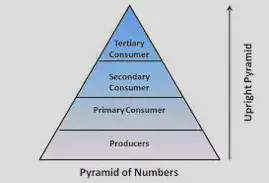Class 7 Ecosystems & Variation
Levels of organisation:
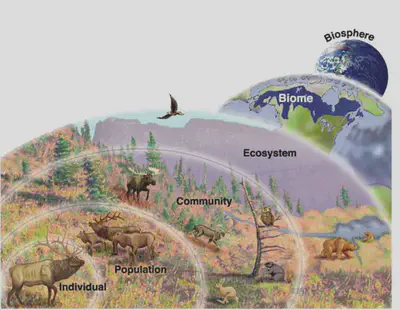
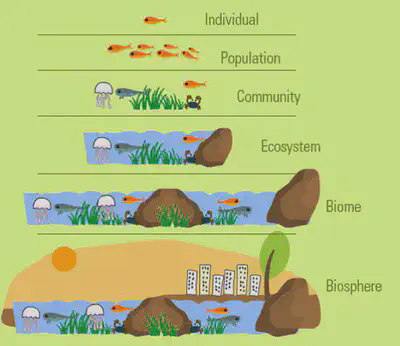
An ecosystem is a community of living organisms (plants, animals and microbes) in relation with the non-living components of their environment (things like air, water and mineral soil), interacting as a system.
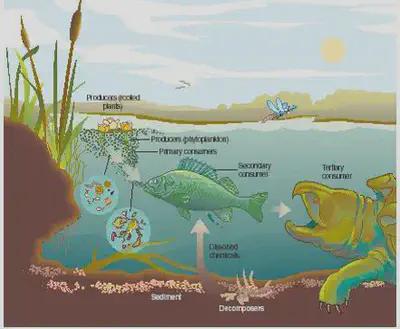
A habitat is the natural home of an animal, plant, or other organism. A good habitat meets all the environmental conditions an organism needs to survive. … An ecosystem is made up of living organisms and nonliving components such as air, water and mineral soil.
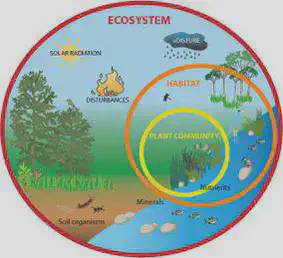
A community is an association of populations of two or more different species occupying the same geographical area and in a particular time.
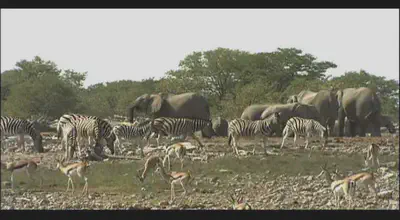
•A Population is a group of individuals of the same species inhabiting the same area.
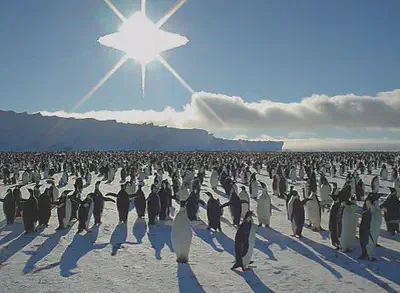
•A species contains closely related organisms that are very similar to each other and are usually capable of interbreeding and producing fertile offspring.

There is greater variation between different species than within the species itself.
•Hybrids are infertile offspring between two different species.
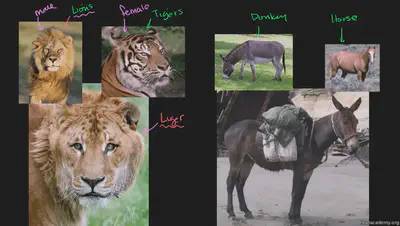
Animals and plants must be adapted to their habitats if they are to survive in the ecosystem
ADAPTATIONS- features which help organisms survive in a habitat
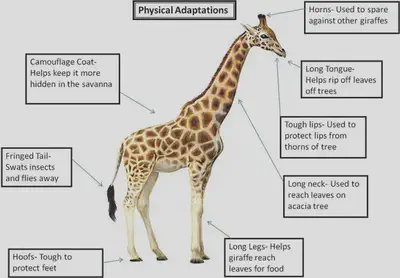
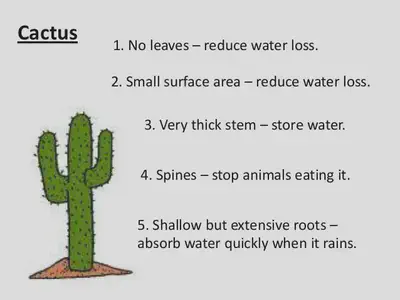
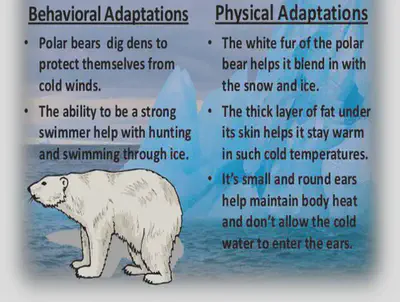
The adaptations of an organism can be inherited.
INHERITED VARIATION – variation due to features passed down by parents to offspring.
•Different species have the most inherited variation compared to inherited variation between same species.
•Members of the same species have inherited variation because all gametes contain slightly different instructions for features. A different sperm cell and egg cell are used to produce each offspring and so each inherits a slightly different mix of features.
•However, identical twins are an exception since they both develop from the same fertilized egg cell.

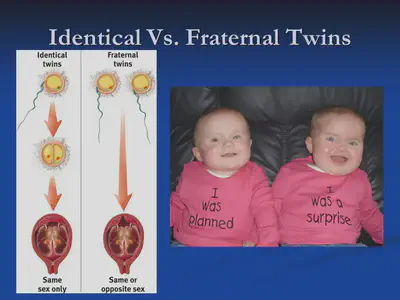
ENVIRONMENTAL VARIATION – variation caused by environmental factors such as sunlight, temperature, oxygen, pH, moisture and availability of nutrients.
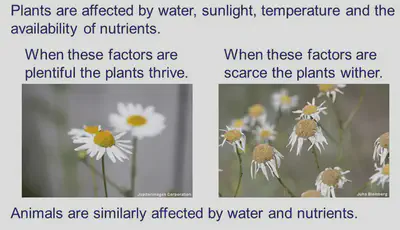
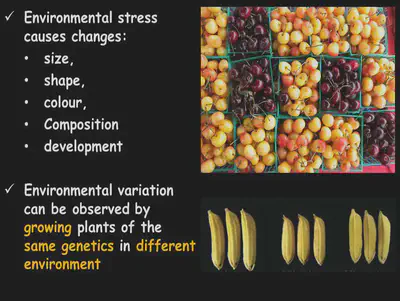
All organisms show inherited variation and environmental variation
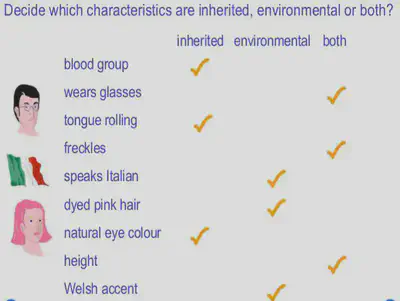
How does the environment affect organisms?
•Environmental factors affect organisms. Some organisms inherit features that allow the organism to change when environmental factors change.
•Nocturnal animals are active only at night when there is no sunlight and are adapted to do so by inheriting powerful hearing and eyesight and being able to move silently to catch nocturnal prey.
•Organisms adapted to changes in tides during the day e.g seashore organisms that have tentacles that can be pulled inwards when the tide is out to stop the organisms from drying out.
•Deciduous trees can lose their leaves during the winter when there is not enough sunlight for photosynthesis and their leaves also lose water when the ground is frozen.
•Evergreen tress are adapted to keep their leaves all year round since their leaves are tougher and don’t lose much water.
•Poppies are plants which die in the winter but their seeds grow in spring .
•Bluebells are plants that have bulbs underground that can grow into a plant again in spring as during winter the parts of the plant above the ground die.
•Rabbits can grow longer fur during winter.
•Ptarmigans feathers can change colour with the seasons to help it camouflage better.
•Hedgehogs hibernate (i.e. become inactive in the winter when there is less availability of food.)
•Birds fly and migrate to warmer places during winter to find food.
How do organisms affect their environment?
Organisms compete for resources in their environment such as:
•Food
•Water
•Oxygen
•Space
•Shelter
•Mates
•Light
•Warmth
•Minerals
Human activities such as deforestation and competition for these resources can further reduce them and when these resources are missing populations reduce and organisms can get extinct.
Interdependence
The organisms in an ecosystem all depend on each other. They are interdependent. E.g. birds use trees for shelter and plants use animal waste (containing mineral salts) to help them grow. A food chain shows how organisms depend on each other for food.
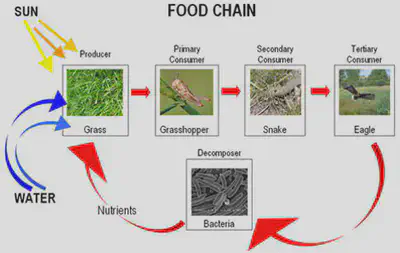
•The arrows in a food chain show energy flow as one organism eats the other.
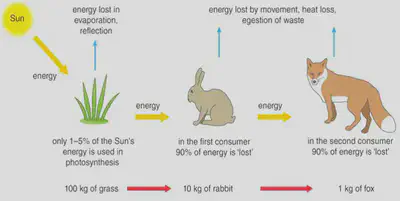
Populations are affected by availability of food. Organisms compete for food. Increase in prey can increase the number of predators.
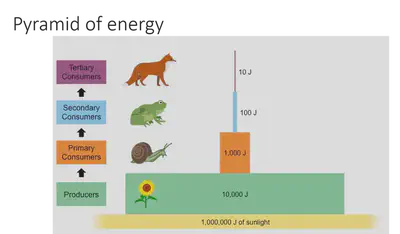
Pyramid of numbers – show number of organisms at each stage of a food chain.
•Sometimes they may not look like a pyramid if organisms have different sizes e.g one rose bush is big enough for many aphids to feed on.
